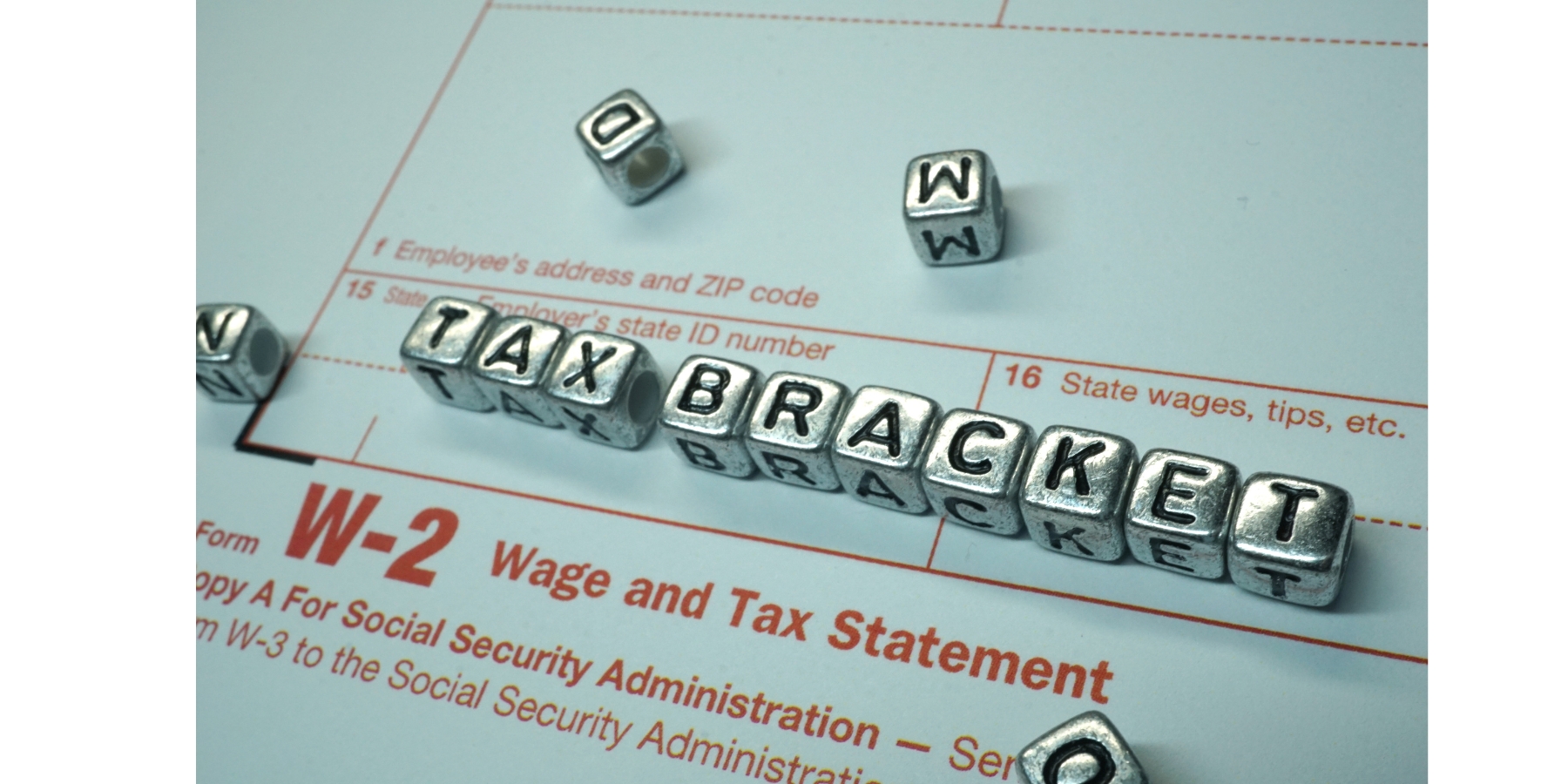
What you need to know about income tax brackets, standard deductions, and other changes to tax laws for 2024.
In good news to come out of Washington, D.C., the Internal Revenue Service introduced new federal income tax brackets and higher standard deductions for the 2024 tax year.
These changes won’t go into effect for your 2023 tax filings, which are due April 15, 2024. Rather, they take effect for the income you earn throughout 2024. You will notice the changes on your 2025 tax filings.
However, the new tax brackets may affect your take-home pay this year if you fall into a lower marginal tax bracket. You can use the paycheck boost to put some extra cash in your pocket to help pay down high interest debt, build your savings account, or just battle inflation in light of higher prices for things like groceries, gas, and household goods.
Before we get into the new tax brackets and how they might save you money, let’s look at how tax brackets work.
Understanding Progressive Tax and the Federal Tax Brackets
The federal government employs a progressive tax system. The more you earn, the higher percentage you’ll pay in taxes. But, in a progressive system, not all income is taxed at the same rate. In the U.S., pay is divided into seven brackets, with the lowest bracket falling below poverty level and the highest level exceeding half a million dollars.
The first portion of your income is taxed at the lowest rate, and the rate increases as your income rises. Your “effective” tax rate is the actual percentage of taxes you pay, or your total pay divided by your total tax.
Your “marginal” tax rate is the highest percent you pay, or the tax bracket for your last dollar of taxable income.
When people refer to their tax bracket, they typically mean their marginal tax rate. Changes to income tax brackets this year may reduce your effective tax rate and may also put you in a lower marginal tax bracket.
Federal Income Tax Bracket Changes for 2024 – 2025
The IRS made significant changes to the seven tax brackets this year, raising the taxable income to reach each bracket by 5.4% for both individual and married taxpayers. This increase follows a 7% boost from 2022, so you may already find yourself with lower effective and marginal tax rates compared to last year when you filed your taxes.
New Tax Brackets May Prevent Bracket Creep
The government makes large adjustments in the tax bracket income thresholds when inflation gives Americans less buying power.
Cost-of-living increases mean salaries may rise during times of inflation, but your buying power only keeps pace with inflation. Your money doesn’t go further.
If taxes weren’t adjusted for inflation, you could face a larger tax bill on top of higher costs for goods and services. This would give many Americans even less buying power, potentially weakening the economy. This is called “bracket creep.”
Although inflation has slowed since mid-2023, it hasn’t yet reached the U.S. Federal Reserve’s target rate of 2%. So, the IRS adjusted the tax bracket widths further in 2024. The IRS also made other changes to tax laws to help prevent bracket creep.
Read on to find out the adjusted tax brackets for 2024 and the other changes that will affect your tax bill or refund.
New Federal Income Tax Brackets Compared to 2023 Tax Brackets
The U.S. has seven tax brackets with tax rates of 10%, 12%, 22, 24, 32, 35, and 37. The federal income tax rates have stayed the same for 2024.
The charts below compare the salary ranges for each tax bracket in 2024 compared to 2023 for individuals (or those who are married, filing separately), joint filers, and taxpayers who file as head of household.
Tax Brackets for Single Filers and Married, Filing Separately
Tax Brackets for Individuals and Married, Filing Separately
| Rate | Income Brackets 2023 | Income Brackets 2024 |
| 10% | up to $11,000 | up to $11,600 |
| 12% | $11,001 – $44,725 | $11,601 – $47,150 |
| 22% | $44,726 – $95,375 | $47,151 – $100,525 |
| 24% | $95,376 – $182,100 | $100,526 – $191,950 |
| 32% | $182,101 – $231,250 | $191,951 – $243,725 |
| 35% | $231,251 – $578,125 | $243,726 – $609,350 |
| 37% | $578,126+ | $609,351+ |
Tax Brackets for Married Couples, Filing Jointly
| Rate | Income Brackets 2023 | Income Brackets 2024 |
| 10% | up to $22,000 | up to $23,200 |
| 12% | $22,001 – $89,450 | $23,201 – $94,300 |
| 22% | $89,451 – $190,750 | $94,301 – $201,050 |
| 24% | $190,751 – $364,200 | $201,051 – $383,900 |
| 32% | $364,201 – $462,500 | $383,901 – $487,450 |
| 35% | $462,501 – $693,750 | $487,451 – $731,200 |
| 37% | $693,751+ | $731,201+ |
Tax Brackets for Head of Household
| Rate | Income Brackets – 2023 | Income Brackets 2024 |
| 10% | up to $15,700 | up to $16,550 |
| 12% | $15,701 – $59,850 | $16,551 – $63,100 |
| 22% | $59,851 – $95,350 | $63,101 – $100,500 |
| 24% | $95,351 – $182,100 | $100,501 – $191,950 |
| 32% | $182,101 – $231,250 | $191,951 – $243,700 |
| 35% | $231,251 – $578,100 | $243,701 – $609,350 |
| 37% | $578,101+ | $609,351+ |
How Will New Income Thresholds Affect Your Paycheck and Tax Bill?
As you can see from the charts above, if you are an individual taxpayer, making, for instance, $46,000 per year, you would have had a marginal tax rate of 22% in 2023. That means the first $11,000 of your income would be at 10%, the next portion (up to $44,725) would be taxed at 12%, and the remaining portion would have a tax rate of 22%.
There’s a significant jump, but only for a small portion of your pay.
In 2024, your income up to $11,600 would be taxed at 10%, and the rest taxed at 12%. Your marginal tax rate drops from the third bracket to the second bracket. Your withholding pay will be adjusted accordingly, and you’ll take more money home in your paychecks.
Of course, your tax rates vary based on your filing status.
Higher Standard Deduction May Help You Keep More of What You Earn
In addition to new tax brackets that will change the effective and marginal tax rates for many Americans, the IRS also increased the standard deduction for 2024.
For 2024, the standard deduction has gone up to $14,600, an increase of $750. Married couples filing jointly now enjoy a standard deduction of $29,200, up from $1,500 last year. Taxpayers who file as head of household can take a standard deduction of $21,900, an increase of $1,100.
Many Americans opt to take the standard deduction rather than itemizing tax deductions, especially if they don’t have a lot of deductions, such as medical expenses, investment interest, or mortgage interest.
Small business owners and independent contractors typically itemize tax expenses because their expenses exceed the standard deduction.
If you aren’t sure if you should itemize or not, it’s a good idea to speak to a tax professional who can help you uncover deductions and determine if you can save money by itemizing to get the most out of tax write-offs.
Other Tax Law Changes to Know for 2024
In an effort to adjust taxes for inflation, the IRS has also made other changes for 2024.
Alternative Minimum Tax (AMT) Exemption
The new Alternative Minimum Tax exemption has increased to $85,700, up from $81,300 in 2023. The AMT applies to individuals who earn more than the exemption amount, to ensure they pay at least a minimum amount of tax, according to the IRS website.
Earned Income Tax Credit (EITC)
The maximum earned income tax credit has gone up from $7,430 to $7,830 for 2024. This is the maximum amount that taxpayers with three or more qualifying children can receive, as a fully refundable tax credit.
Annual Gift Tax Exclusion
The maximum gift exclusion has risen to $18,000 from $17,000. This is the amount that you can give any individual as a gift annually without any tax liability.
Other tax credits and deductions have also gone up in 2024, including:
- Monthly limit for qualified transportation fringe benefit (up to $315)
- Limit for employee salary reductions for contributions to health flexible spending arrangements (up to $3,200)
- Adoption tax credit (up to $16,810)
Steps You Should Take Now to Reduce Your Tax Bill
The new tax brackets, combined with a higher standard deduction and other changes, may reduce your tax bill in 2025. However, because of the progressive tax system in place in the U.S., it may not lower your tax bill as dramatically as you might hope.
A tax professional may be able to help you leverage all the deductions you deserve to lower your tax bill. If you have investment income, there are also strategies you can use to reduce your taxable income.
When you file your tax returns in 2024, speak to your tax accountant about ways to plan ahead to keep more of your hard-earned money in 2025.
Alleviate Tax Can Help
If you have unpaid tax debt that’s causing you concern or if you have not filed your income taxes for past years, don’t wait. The longer you wait to file, penalties will continue to accrue.
The deadline for filing your 2023 taxes is Monday, April 15, 2024 (except in Maine and Massachusetts, where you have until April 17).
Let Alleviate Tax help you reduce your tax debt now for a fresh start this spring. Contact us now.
PPA
How do I know what tax bracket I am in?
To figure out your marginal tax rate, or the highest tax bracket you fall under based, you’ll need to know your filing status, and taxable income, and then refer to the tax bracket table for 2024. Your marginal tax bracket is the highest rate at which any portion of your income can be taxed.
What are the new IRS tax brackets for 2024?
The IRS has seven tax brackets for 2024: 10%, 12%, 22%, 24%, 32%, 35%, and 37%.
How much Federal tax should I pay on $70,000?
Depending on your tax credits and deductions, you could pay $10,525 on a $70,000 income based on a marginal tax rate of 22% and an effective tax rate of 15%. However, most people have their taxable income reduced by deductions, and their overall tax bill further reduced – or even eliminated – by tax credits.









